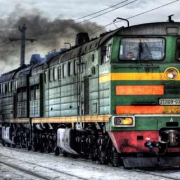The emerald factor – LNG from Colombia
About 3 years ago my old friend Fernando Viveiros brought me to Colombia. I went there on my spree to secure volumes of LNG for EconGas’s GATE commitment which remains unutilized to this very day. Readers of this blog will not be surprised to learn that I am a proponent of a pro-active solution – namely building one’s liquefaction terminal. I had figured at the time that commercially attractive volumes of LNG could not be secured for the coming years. Nothing wrong – seen from today’s point of view.
So I enter Colombia trying to secure feed gas and interested parties for a liquefaction terminal on the Caribbean Sea. What Fernando introduced me to was a bewildering array of different players and also ideas of what to do with the gas that Colombia produced or was supposed to produce in the future.
Many know Colombia for its Emeralds, even more for its wild past during the drug wars. The wars are over and visitors can enjoy one of the most beautiful countries on earth again. But to the energy man, Colombia rings for its huge super high-quality coal reserves. But how is coal important to an LNG man?
Much of Colombia’s coal lies in the North of the country, straddling the shoreline of the Caribbean Sea. Although it’s the highest quality coal on the planet, much of it is not recoverable economically. But those coal seams also hold astronomical amounts of Coal Bed Methane or Coal Seam Gas as Aussies like to call it.
Part of it is and no doubt much more will be used to produce electricity for the inhabitants of the North. The Andeans make transport to the South uneconomical. Besides, the south holds its bounty of Natural Gas which is an entirely different story, to begin with.
Nice, you say, let’s make LNG of it and earn a buck. Great idea but there is a snag. It’s about the same as in Coal Seam Gas developments in Australia. CBM is not a “develop a couple of wells and that’s it” kind of affair. It’s more like drilling thousands of holes and stimulating them to bring gas flows to economically interesting levels.
And herein lies the problem. Classical LNG terminals need a hell of a lot of feed-gas pretty much from the moment they are switched on (it’s not flicking one switch but let’s hang with that concept for the sake of argument). But CBM reserves are developed over long periods as those thousands of holes have to be drilled and subsequently stimulated. That takes time. Plus once a well is drilled and stimulated you cannot simply shut in the gas flow anymore as you would do with a conventional well.
So you deal with a gas flow that is building up over years on the one side and a plant that needs a big flow more or less in an instant. How do the Americans deal with this as shale gas behaves very similarly?
In the US shale has been developed for the internal market and not for LNG exports. Exports come as something like the cherry on top (I made my opinion on US LNG exports clear in another post).
In the US, shale gas production runs into a well-developed, super-large pipeline grid with insatiable capacity and gas storage facilities that can absorb almost any inflexibility in production. This system has developed over decades of internal gas market building and hence did not need any additional investment to absorb shale.
Such a system does not exist in North Colombia and even if it existed, it would be very small in comparison to the CBM project. That means the CBM project would have to find a way to absorb years of CBM development until a large 5 mtpa facility is ready to go operational. Or the liquefaction plant would have to run below capacity to catch up on more feed-gas to come over time.
Bad problem no matter how you tackle it.
Let’s go back and look at the bigger picture. A large plant needs large volumes. Hence a smaller plant needs smaller volumes. If someone built a 0.5 mtpa plant, for example, the resulting feed-gas flow would be about a tenth as big as for the larger plant. That looks already much more feasible.
But smaller plants also mean smaller tanks and smaller vessels that can be loaded one at a time which rules intercontinental export out. But that could be a blessing in disguise.
What do we need the big vessels for? Exactly – for bulk transport over oceans. But as with everything, transporting LNG over large distances has a price and that price should only be considered if you don’t have a market that pays you healthy margins at your doorstep – especially so for a first-timer.
And for that, we need to look beyond the fence. Remember my post on Caribbean LNG as a market? One reason why most Caribbean islands don’t have LNG regasification facilities is not that they don’t want them but rather because they can’t absorb one of those huge cargo in one go. Their reception facility would be way too big for the needs of the entire island and as there are no smaller LNG transporting vessels in the area, it’s useless to think of it.
But if the putative Colombian project started smaller to begin with it would be perfect for that market. Let’s assume a 0,5 mtpa plant. With 360 operational days per year, this plant would produce a little less than 1400 tons of LNG per day. That’s about 3000 m3 of LNG per day. It would take around 10 days to fill a 30.000 m3 tank which would be a much smaller investment than one of the 180.000 m3 monsters. But such a tank could easily fill any vessel smaller than 30.000 m3. Make the tank slightly bigger just to have some operational spare or the vessel smaller.
Such a vessel could serve Curacao, Aruba, and the Panamanian Canal Zone in less than 4 days loading and unloading and return voyage included. The Lesser Antilles can all be done in about 8 days.
That means one single vessel would easily service a 0,5 mtpa train with a 30,000 m3 full concrete tank. Now just add a second train and a second vessel and the existing tank and the jetty would just cope with no further investment. It’s only the churn rate at the tank that’s increased. This could probably even be done with a third train and possibly a fourth assuming that there is enough shipping capacity. Easy and cheap expansion but let’s stick with our small initial train.
As this is a much smaller train than one of the big base-load monsters, much less feed-gas needs to be developed and the startup of the train can much better be synced with upstream developments (remember we talk about CBM here).
Why the Caribbean market then? One of the big misconceptions of the energy world is the belief that LNG is only for rich countries. But if you just take a look at how some not-so-rich countries generate their electricity you will come to different conclusions. I have always held that the one who can afford to burn expensive and dirty diesel to light his home can always go with LNG as it is the cheaper fuel. Environmental protection comes as a welcome side effect.
So, any Caribbean island, no matter where it is situated can afford LNG.
But there is another, even better opportunity looming on the horizon. The marine world is looking for LNG to fuel the next generation of vessels as dirty bunker C becomes more difficult to use. In 2015, the world’s first Environmental Control Area came into force in the Baltic Sea that curtails the amount of pollutants one can blast through his smokestack. That’s a bad problem with shipping as diesel is expensive and does not solve the problem. LNG as a shipping fuel becomes a reality in this part of the world very quickly.
But much of the OECD world followed suit in 2020 and that brings emissions control to the Caribbean. Already today, cruise liners and other shipping companies in Florida gobble up any news on LNG as a fuel with an insatiable hunger. That is going to get more pronounced.
It is to be expected that the Panama Canal Zone will be an important bunkering point for the coming LNG bunkers world and Colombia is the closest of all proximities to it. Less than 500 miles from Santa Marta, no other LNG producer could supply it as reliably and as economically as a putative Colombian plant could.
Remains – the cost issue. LNG aficionados say that the smaller you go, the more expensive the LNG gets as CAPEX and OPEX go out of the window. But those who say so have not yet understood the economics of mass production and how they beat scale hands down. Today’s modern modular liquefaction trains are cheap, reliable, and as plug-and-play as it gets. You can’t beat that with monster trains that carry the cost of a failed Regasification plant.
Colombia has everything in its favor to build a small LNG plant. And the region would love it to do so.
Now, who is the investor willing to stand up and make his next superstar investment? Colombian coal producers should pay special attention.


















Really liked your post. I am new to LNG and all the assumptions and conclusions about the market make total sense. As a follow up Pacific Rubiales Energy (PRE) is actually starting a project, you should check their last investors presentation, where they give some information about it. And as a follow up on that, I think that CBM coupled with the starting interest in shale gas from some small and big producers (Conoco, Exxon, Shell, Ecopetrol), and also offshore production of gas (more fields like the ones Shell have in the North Coast of Colombia) could provide sufficiently in a couple of years (how many I don’t know) the intake for a small LNG facility. I also found a project called El Viajano from Altenesol, but I don’t really feel is true. Anyway, thanks, I will probably include your post in my thesis.
Thanks for the comment. Many of the things I write just reflect my thinking or common sensical stuff and I have stopped following every LNG project idea holding my breath in the process. Most of them never make it beyond the drawing table simple because economic common sense is utterly absent. Colombia is one of the places where LNG makes sense for export. That does not mean that it will happen. It just means that it would make good sense. What’s the title of the thesis?